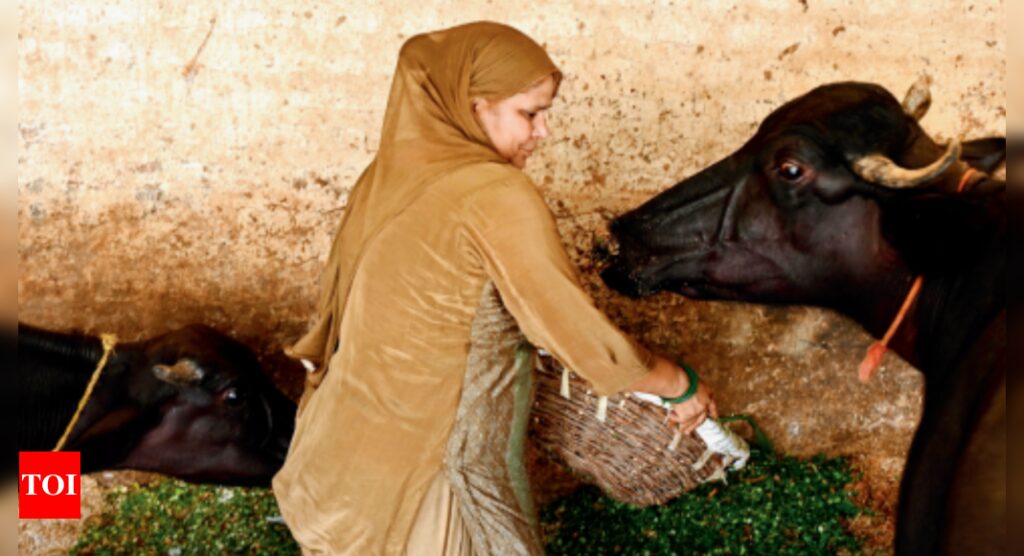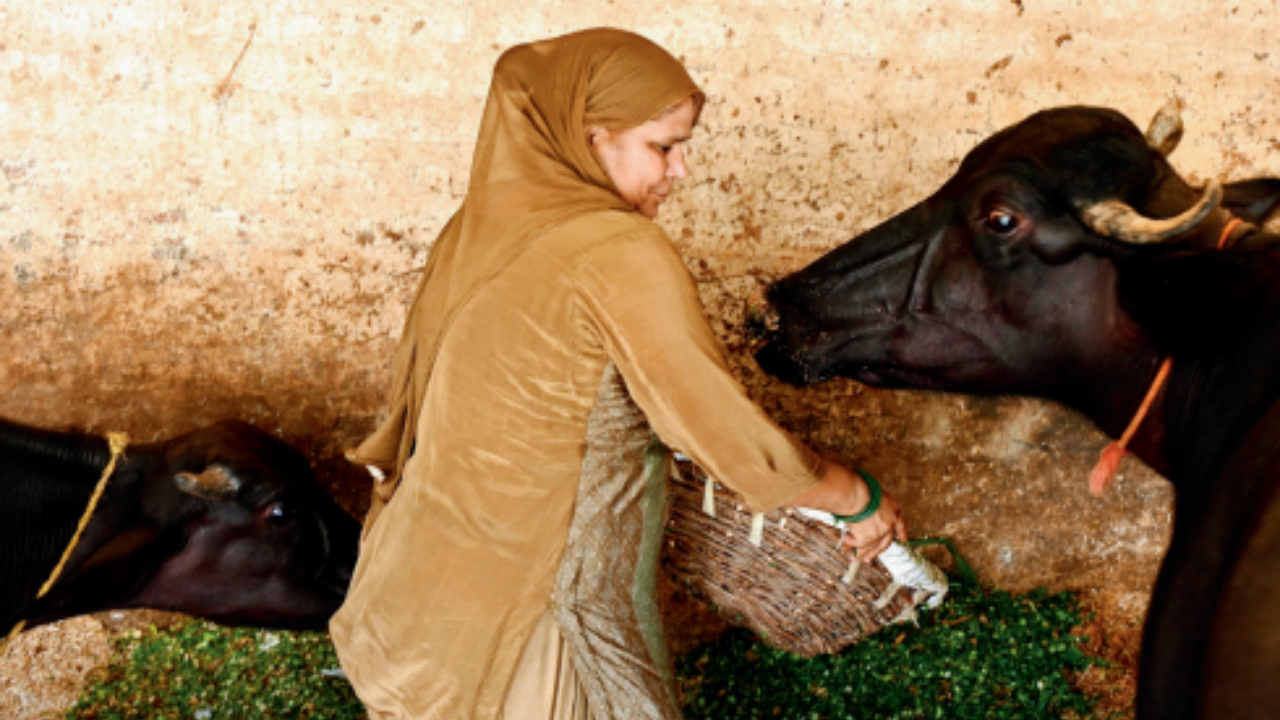[ad_1]
She was elected chief of this village in Haryana’s Jind district last year but her brother-in-law Naveen Kumar is the one holding court. “He takes care of the official work,” Savitri says.
“If he needs me to come along, I accompany him. But he takes care of everything.” Proxies For Men Women’s representation in Haryana’s village bodies has increased over the years. In 2020, the state announced 50% reservation for women in panchayat elections and 2,477 women were elected sarpanch in November last year. Yet, the authority often lies with the incumbent’s husband or ‘sarpanch pati’.
That’s chiefly because the villages are like the fiefs of some powerful families. “People trust our family for the work we have done for years,” Naveen says, adding, “It doesn’t matter who contests the polls. Even if my 80-year-old mother was in the fray, she would have won.” Naveen became the “family candidate” when the Bhambewa seat was reserved for women, and his brother, Savitri’s husband, decided to devote his time to the family farm. Unshakeable Stereotypes In a deeply patriarchal state like Haryana, men are traditionally seen as leaders and women as homemakers. People’s “comfort” with men be -ing in charge therefore abets the ‘sarpanch pati’ system.
Over 100km away, another Bhambewa village in Jhajjar district elected Preeti Devi last year, but her brother-in-law Ramesh is the de facto sarpanch. “What sarpanch? The only thing I do is sign the documents,” she says. Locals call Ramesh’s house “sarpanch ji’s house”, while Preeti lives 200m away with her son and mother-in-law. Her husband passed away four years ago. With a BEd degree Preeti is probably more educated than the men handling the official work on her behalf, but she admits she would not have contested the polls if the seat weren’t reserved for women.
“People do come to me with their problems and I hear them out. But my brother-in-law goes out and gets the work done,” she says before leaving to milk her buffaloes. Nobody’s Poster Girl At the entrance to Khanpur village in Sonipat district, a giant poster for a chief minister’s event names Sangeeta Devi, “wife of Dilavar Singh”, as the sarpanch. Another poster on the main road has Dilavar’s face, not Sangeeta’s, beside the CM’s. The sarpanch pati is clearly the go-to person here.
“He’s a good man, we want him to work for the village,” says an 80-year-old villager about Dilavar. Others sharing his hookah nod in unison. Sitting on a charpoy next to his mother, Dilavar says women in Haryana “have never been out in the field. My wife is no exception. That is why everyone comes to me with their problems.”
He holds daily meetings with the villagers in a make-shift office in his house. Women have to visit Sangeeta in another building behind the house. By the time Sangeeta joins the meeting after feeding her cattle and cleaning the cow -shed, she is drenched in sweat and out of breath. “My husband helps me a lot with my work. He travels around the village, I sign the documents he brings to me,” she says sitting beside him.
Dilavar cuts her short: “Tell them about the park we are trying to build or the drains you got cleaned.” No Real Empowerment At Gamri, another Sonipat village, sarpanch pati Balraj handles the official duties of his wife Sheela Malik. “Even today, people here identify my husband as the sarpanch. I am required only for official visits,” she says, adding, “A woman can’t do all this work on her own. My husband is there to help me. But women come to me with their issues.” They are mostly domestic complaints but Sheela says, “I have to take my husband’s help because the men don’t listen to me.”
Sudesh Chhika -ra, vice-chancellor of Bhagat Phool Singh Women’s University in Sonipat, is one of the activists trying to make Haryana women assertive about their rights, but she says chang -ing the culture is not easy as it is “deep-rooted”. She mentions a recent event chaired by Haryana CM Manohar Lal Khattar in Khanpur village where the woman sarpanch was represented by her husband.
“This happened in a village where education was introduced almost 100 years ago. The literacy rate there is also better than in most other villages. Even then, the situation is no different for women,” she says. While Chhikara tries to educate women about the issues they should raise in panchayat meetings, across the four villages TOI toured women sarpanches only talked about hygiene, menstruation and food supply in anganwadis. And yes, fights between couples.
[ad_2]
Source link











More Stories
Congress replaces Kamal Nath, names an OBC as Madhya Pradesh chief | India News
Fire breaks out in ITBP camp in Srinagar; none hurt | India News
Parliament Security: Co-villagers give clean chit to Lalit Jha, parents to move court | India News